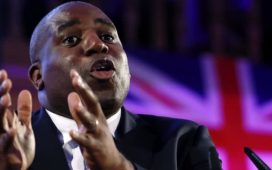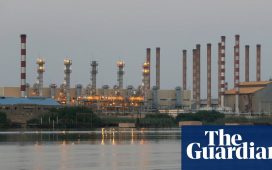WASHINGTON (Reuters) – The 18 largest banks operating in the United States took the first step toward doling out capital on dividends, share buybacks and other investments on Friday, after clearing the first stage of their yearly health checks with the U.S. Federal Reserve that assess their ability to weather a major economic downturn.
The central bank said lenders, including JPMorgan Chase & Co, Citigroup Inc, Goldman Sachs, Morgan Stanley and Bank of America Corp, would face losses of $410 billion under its most severe recession scenario ever, but levels of high-quality capital would still be well above regulatory minimums.
“The nation’s largest banks are significantly stronger than before the crisis and would be well-positioned to support the economy even after a severe shock,” Fed Vice Chairman Randal Quarles said in a statement.
The Fed said hypothetical losses were broadly comparable to results from prior years, with the most significant loan losses seen in credit cards, followed by commercial and industrial loans.
Friday’s results, the first of the two-part annual “stress test,” showed the country’s biggest lenders could meet minimum Fed standards based on information they submitted to the regulator.
But banks could still stumble next Thursday, when the Fed announces whether it will permit banks to dish out dividends and buy back shares. That second test is more rigorous, assessing whether it is safe for banks to implement their capital plans. It also reviews operational controls and risk management.
All eyes are on Deutsche Bank, which is bracing for potentially its fourth flunking in five years amid ongoing turmoil in its U.S. operations, Reuters reported on Thursday. Last year, the Fed failed the bank, citing “material weaknesses” in its data capabilities and capital planning.
The Fed created the stress tests during the 2007-2009 financial crisis to ensure banks are strong enough to continue lending through a severe economic downturn.
This year’s tests are more streamlined following a Fed review of the process, which has long been hated by the industry. Roughly half as many banks were tested this year compared to 2018 after the Fed earlier this year moved several smaller firms onto a two-year testing cycle.
The 18 banks tested this year hold roughly 70 percent of all U.S. bank assets, according to the Fed.
In addition, most banks can no longer fail on “qualitative” grounds. Previously, banks that had sufficient capital could still be flunked if the Fed identified risk management and operational problems.
In March, the Fed said it was dropping this qualitative objection for domestic U.S. banks. Only the U.S. subsidiaries of five foreign lenders — Deutsche Bank, Credit Suisse Group AG, UBS Group AG, Barclays Plc and TD Bank — must clear that hurdle this year.
Since the first test in 2009, banks have seen losses shrink, loan portfolios improve and profits grow. The largest banks have also strengthened their balance sheets by adding more than $680 billion in top-tier capital, the Fed said.
This year’s recession scenario included a jump to 10 percent unemployment, as well as elevated stress in corporate loan markets and falling real estate prices. However, the Fed also this year gave banks more information about the testing models, after years of industry gripes that the process is too opaque.
Reporting by Pete Schroeder; editing by Leslie Adler and Michelle Price













